




Doing laundry can be a tedious task, especially when it comes to washing delicate clothing items. Many people rely on mesh laundry bags to protect their delicate items from getting damaged in the washing machine. However, there are other alternative options that you can explore to ensure your delicate clothing stays in pristine condition.
One alternative option is using pillowcases as makeshift laundry bags. Simply place your delicate clothing items inside a pillowcase, tie a knot at the top, and toss it in the washing machine. The pillowcase provides a barrier between your delicate items and the harsh spinning and banging of the washing machine.
Another option is using lingerie bags, which are specifically designed to handle delicate items. These bags often come with a zipper closure to ensure that the items stay securely inside during the wash cycle. Lingerie bags are available in various sizes and are perfect for washing items such as bras, underwear, and stockings.
If you’re feeling creative, you can even make your own laundry bag using a piece of fabric and some basic sewing skills. By customizing the size and shape of the bag, you can ensure that it accommodates your delicate items perfectly. This option allows you to personalize your laundry bag while also being environmentally friendly by using reusable materials.
Alternative Options for Protecting Delicate Clothing
When it comes to protecting delicate clothing items, there are several alternative options to using a mesh laundry bag. These options can help prevent mishaps and damage that can occur during the washing process. Below are some alternatives you can consider:
1. Hand Wash
One of the best ways to protect delicate clothing is to hand wash them. Fill a basin or sink with cool water and add a mild detergent. Gently agitate the clothing items in the soapy water, then rinse thoroughly with clean water. This method allows you to have complete control over the washing process and minimizes the risk of damage.
2. Delicate Wash Cycle
If you prefer to use a washing machine, most modern machines have a delicate wash cycle specifically designed for fragile clothing. This cycle uses slower agitation and shorter spin cycles to reduce the potential for damage. Be sure to read the clothing care tags and follow the manufacturer’s instructions.
3. Pillowcase or Lingerie Bag
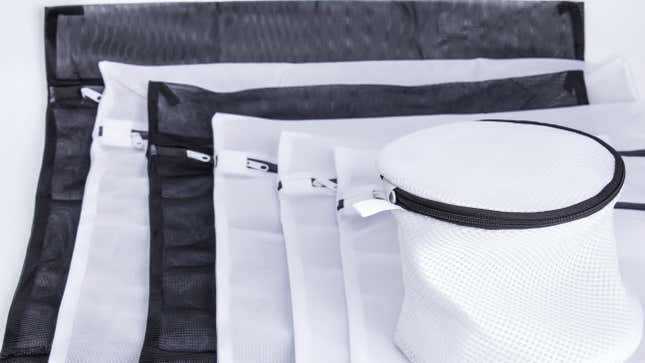
If you don’t have a mesh laundry bag, you can use a pillowcase or a lingerie bag as an alternative. Simply place the delicate clothing items into the pillowcase or bag and tie it closed. This creates a barrier that helps prevent tangling and snagging during the washing process.
4. Wash by Garment Type
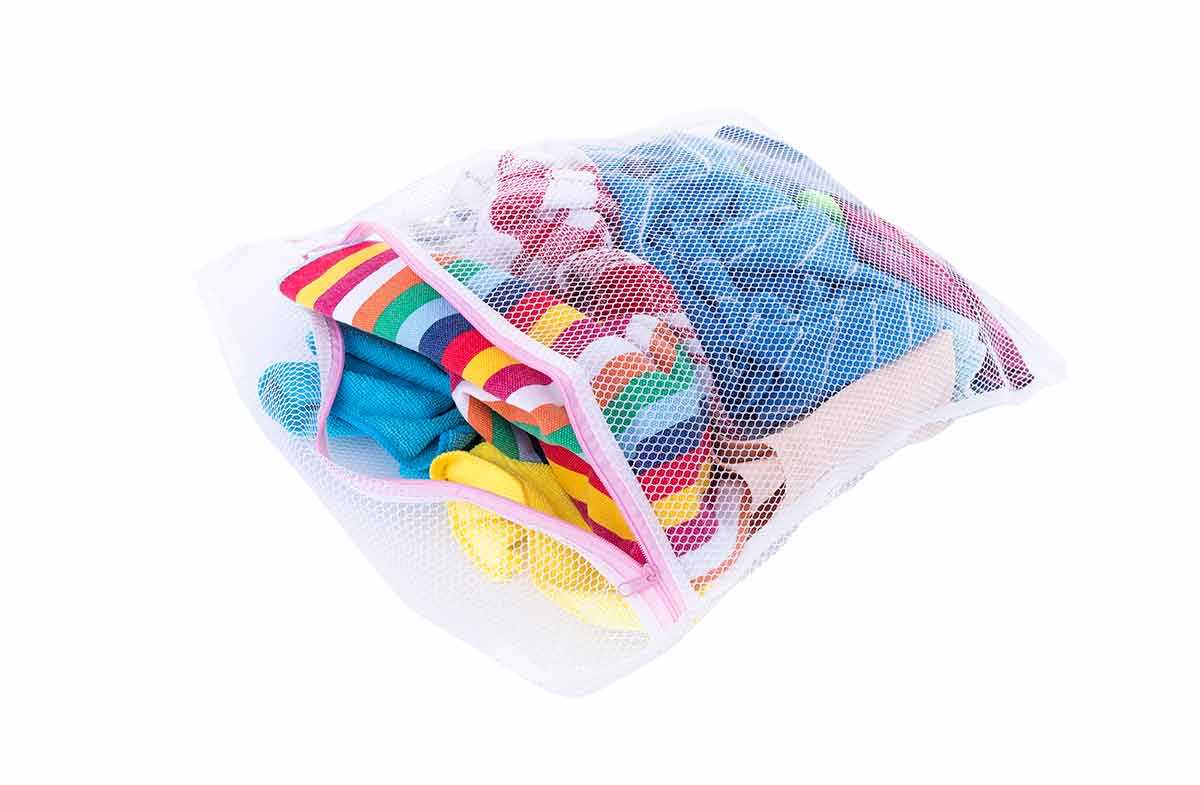
Another alternative is to separate your delicate clothing items by garment type and wash them individually or in small batches. This allows you to give each item the appropriate level of care and attention it needs during the washing process. For example, wash all your lingerie together and all your silk blouses together.
5. Hand Washing Detergent
Using a specialized hand washing detergent can also help protect delicate clothing. These detergents are formulated to be gentle on fabrics while effectively removing dirt and stains. Look for a detergent specifically labeled for hand washing or delicate fabrics.
6. Cold Water Wash
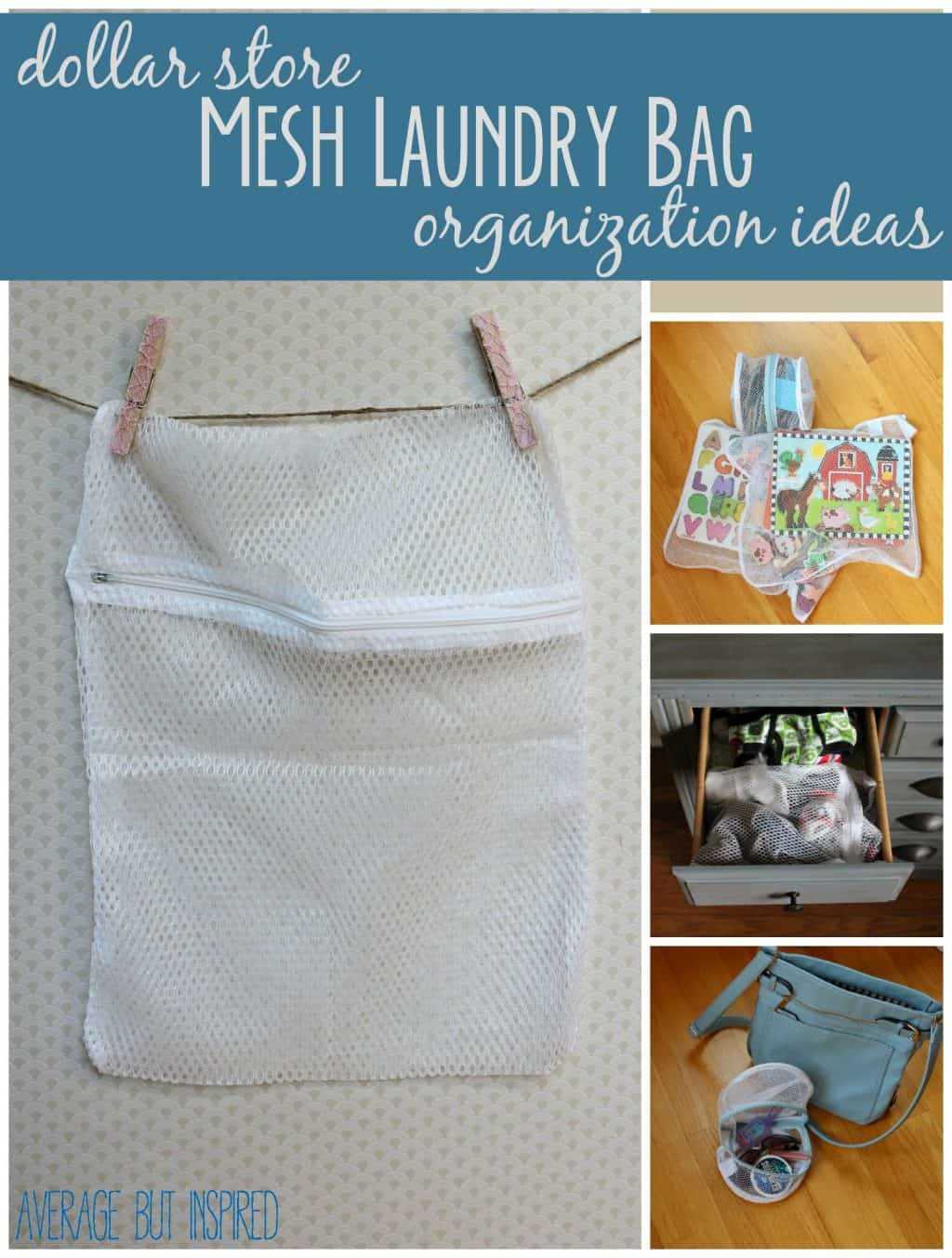
Washing delicate clothing items in cold water can help minimize color bleeding and shrinkage. Cold water is generally gentler on fabrics and can help preserve their integrity. Be sure to check the care labels on your clothing items to ensure cold water washing is appropriate.
7. Air Dry
After washing your delicate clothing, avoid using the dryer as it can cause shrinkage or damage. Instead, opt to air dry your garments by laying them flat or hanging them on a clothesline. This will help preserve their shape and reduce the risk of mishaps.
Remember, always check the care labels on your delicate clothing items for specific washing instructions. While these alternative options can help protect your delicate clothing, it’s important to follow the manufacturer’s recommendations for the best results.
Fabric Washing Bags: A Mesh-Free Solution
If you’re tired of delicate clothing mishaps caused by traditional mesh laundry bags, it’s time to explore alternative options that offer the same level of protection without the inconvenience of mesh. Fabric washing bags are an excellent solution, providing a more gentle washing experience for your delicate garments.
Here are a few reasons why fabric washing bags are a great choice:
- Durable Materials: Unlike mesh bags that can easily tear or snag, fabric washing bags are made from highly durable materials such as cotton or polyester. This ensures that your clothes are protected throughout the washing cycle.
- Improved Protection: Mesh bags can sometimes allow small hooks or zippers to poke through, causing damage to delicate fabrics. Fabric washing bags provide an added layer of protection, preventing these accidents from happening.
- Easy Zipper Closure: Fabric bags usually come with a convenient zipper closure, making them easy to open and close. This ensures that your garments are securely kept inside during the wash, reducing the chances of losing items or causing tangles.
- Versatile Sizes: Fabric washing bags are available in a range of sizes, ensuring that you can find the perfect fit for your garments. Whether you’re washing a delicate bra or a large sweater, there’s a fabric washing bag that suits your needs.
Using a fabric washing bag is a simple process:
- Sort your garments: Separate your delicate items from the rest of your laundry.
- Place items in the bag: Put the delicate garments into the fabric washing bag, making sure not to overload it.
- Zip it up: Close the zipper to ensure that the garments are securely held inside.
- Wash as usual: Put the fabric washing bag into the washing machine and select the appropriate cycle for your garments.
- Hang dry: After washing, remove the fabric washing bag from the machine and hang your delicate items to dry.
Not only do fabric washing bags protect your delicate items, they also help to prolong their lifespan. By reducing the chances of damage caused by the washing machine, you can enjoy your favorite delicate garments for longer.
So, say goodbye to mesh laundry bags and discover the benefits of fabric washing bags. Your delicate clothing will thank you!
Delicate Cycle: A Gentle Washing Experience
Washing delicate clothing items requires special care and attention to ensure they remain in excellent condition. One way to achieve this is by using the delicate cycle on your washing machine. This setting provides a gentle washing experience that is less likely to cause any mishaps or damage to your fragile garments.
Why Use the Delicate Cycle?
- The delicate cycle is designed to be less harsh on fabrics, making it perfect for delicate items such as lace, silk, or cashmere.
- It typically uses slower agitation and shorter cycles, reducing the chances of clothes getting tangled or stretched.
- By using the delicate cycle, you can extend the lifespan of your delicate clothing and keep them looking vibrant and new.
Tips for Washing Delicate Items
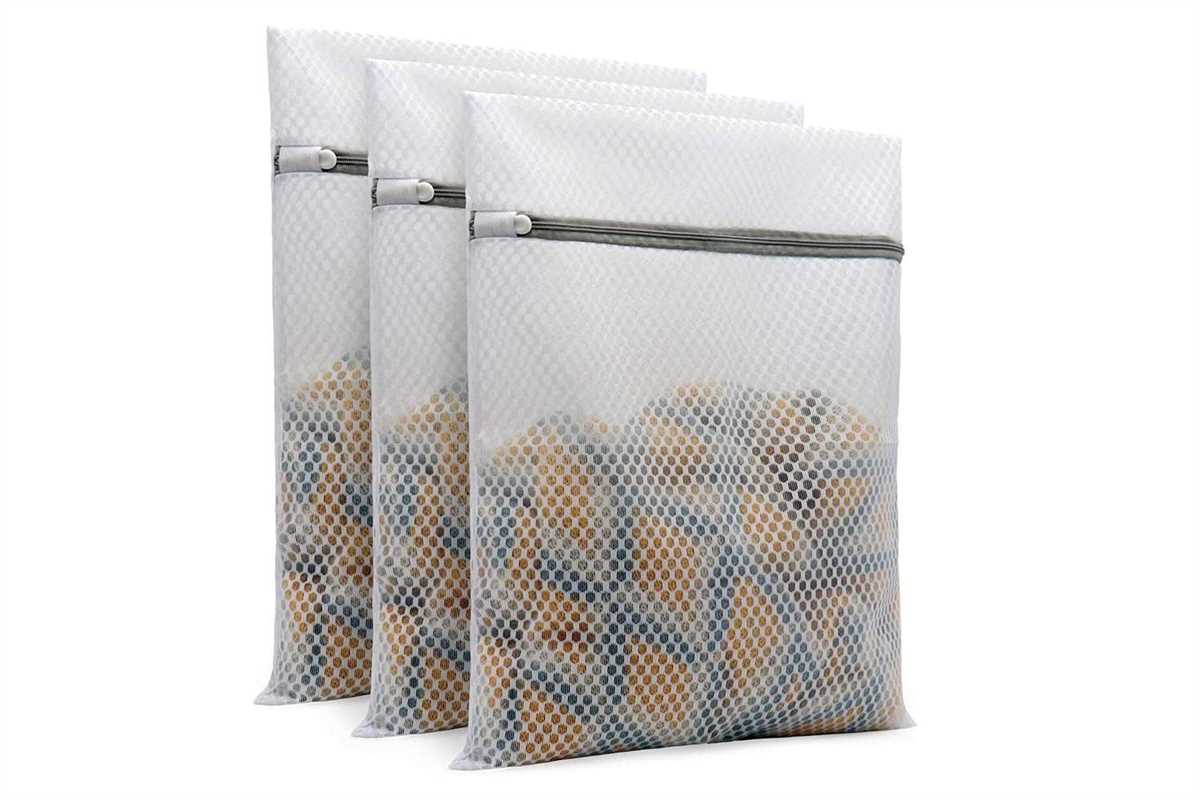
Follow these tips to ensure a successful washing experience for your delicate clothing:
- Sort your laundry: Before washing, separate your delicate items from heavier fabrics to prevent any potential damage.
- Use a mesh laundry bag: While this article explores alternative options to mesh laundry bags, they still prove to be quite beneficial when washing delicate items. Consider using a mesh bag to protect these fragile garments.
- Choose the right detergent: Opt for a mild detergent specifically formulated for delicate fabrics. Avoid using harsh chemicals or bleach.
- Wash in cold water: Cold water is gentler on delicate fabrics and helps to preserve their color and shape.
- Avoid fabric softener: Fabric softeners can leave a residue on delicate items, so it’s best to skip this step.
- Remove promptly: Once the delicate cycle is complete, remove your clothing promptly to prevent wrinkles.
- Air dry or tumble dry on low: Instead of using a high heat setting, air drying or tumble drying on a low heat setting is ideal for delicate fabrics.
By following these tips and taking advantage of the delicate cycle on your washing machine, you can ensure that your delicate clothing receives the gentle treatment it deserves. Say goodbye to mishaps and hello to clean, perfectly cared-for garments!
Hand Wash: The Careful Approach

Hand washing delicate clothing items is a gentle and careful process that helps to maintain their quality and prolong their lifespan. By following these steps, you can ensure that your delicate garments are cleaned effectively without risking any damage.
Step 1: Prepare
Before you begin, gather everything you need for hand washing your delicate clothing items. This includes a basin or sink, mild detergent suitable for hand washing, and lukewarm water. It’s important to check the care instructions on the clothing label to ensure you’re using the correct detergent and water temperature.
Step 2: Fill the Basin
Fill the basin or sink with enough lukewarm water to submerge the delicate items completely. Avoid using hot water, as it can cause shrinkage or color fading.
Step 3: Add Detergent
Add a small amount of mild detergent suitable for hand washing into the water. Gently swirl the water with your hand to distribute the detergent evenly.
Step 4: Submerge and Soak
Place the delicate clothing items into the soapy water and gently submerge them. Let the items soak for a few minutes to allow the detergent to penetrate the fabric and lift any dirt or stains.
Step 5: Gently Agitate

Using your hands, gently agitate the clothing items in the water. Be careful not to twist, wring, or scrub the delicate fabrics, as this can cause damage. Instead, softly squeeze and press the garments to help remove dirt and impurities.
Step 6: Rinse
After agitating the clothing items, drain the soapy water and refill the basin or sink with clean lukewarm water. Submerge the garments again and gently rinse them by squeezing out the soapy water.
Step 7: Remove Excess Water
Once rinsed, gently squeeze out the excess water from the delicate clothing items. Avoid twisting or wringing the fabric, as this can distort its shape and damage the fibers.
Step 8: Dry
Lay a clean and dry towel on a flat surface and place the rinsed clothing items on top of it. Roll the towel and gently press it to absorb the remaining water from the garments. Then, reshape the items and lay them flat on a clean, dry towel or drying rack to air dry. Avoid direct sunlight or heat sources, as they can cause color fading or shrinkage.
Following these steps will help ensure that your delicate clothing items are well taken care of during the hand washing process. Remember to always check the care instructions on the clothing labels for any specific guidelines or restrictions.
Garment Steaming: Wrinkle-free and Safe
When it comes to removing wrinkles from your delicate clothing, garment steaming is a great alternative to ironing. Not only does it efficiently eliminate wrinkles, but it is also safe for delicate fabrics that may be easily damaged by high heat.
Benefits of Garment Steaming
- Gentle on fabrics: Unlike ironing, which requires direct contact with the garment, steaming uses hot steam to relax the fibers. This gentle method prevents fabric damage and helps maintain the quality of your clothes.
- Time-saving: Garment steaming is a quick and efficient way to remove wrinkles from your clothing. It takes significantly less time compared to ironing, allowing you to quickly get ready for any occasion.
- Versatile: Garment steamers can be used on various types of clothing, such as shirts, dresses, blouses, and even delicate items like silk and lace. They can also be used to freshen up curtains, upholstery, and other fabrics around your home.
- Portable: Many garment steamers are designed to be compact and lightweight, making them easy to carry and use while traveling. This means you can always have wrinkle-free clothes no matter where you go.
How to Use a Garment Steamer
- Fill the water tank: Start by filling the water tank of your garment steamer with distilled water. Avoid using tap water, as it may contain minerals that can clog the steamer.
- Hang the garment: Hang the wrinkled garment on a hanger and place it in an open space, ensuring that it is not touching any surfaces.
- Preheat the steamer: Turn on the garment steamer and allow it to preheat for a few minutes. Once it is ready, the steam will start flowing from the nozzle.
- Steam the garment: Hold the steamer nozzle a few inches away from the garment and move it up and down, allowing the steam to penetrate the fabric. Start from the top and work your way down, smoothing out any wrinkles.
- Allow the garment to dry: After steaming, let the garment hang for a few minutes to allow any moisture to evaporate. This will ensure that your clothes are completely dry before wearing or storing them.
Tips for Garment Steaming
- Test on a small area: Before steaming a delicate garment, test the steamer on a small, inconspicuous area to ensure that it does not damage or discolor the fabric.
- Use a garment steamer bag: For extra protection, consider using a garment steamer bag when steaming delicate items. These bags provide an additional barrier between the steamer and your clothes, reducing the risk of damage.
- Remove stubborn wrinkles: For more stubborn wrinkles, hold the steamer nozzle closer to the fabric or steam the garment from the inside, using a protective cloth to prevent direct contact.
- Store the steamer properly: After each use, empty the water tank and allow the steamer to cool down before storing it. This will help prolong its lifespan and prevent any potential accidents.
By using a garment steamer, you can effortlessly remove wrinkles from your clothes without worrying about damaging delicate fabrics. It’s a convenient and safe alternative to traditional ironing, allowing you to keep your clothes looking fresh and wrinkle-free.
Professional Dry Cleaning: The Expert Solution
What is Dry Cleaning?
Dry cleaning is a specialized cleaning process used to clean clothes and fabrics that cannot be cleaned with water. It involves the use of chemical solvents to remove dirt, stains, and odors from garments.
How Does Dry Cleaning Work?
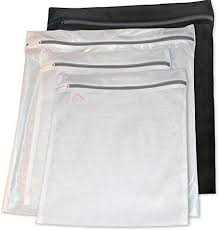
Dry cleaning is a multi-step process that begins with the inspection and pre-treatment of garments. The clothes are then placed in a large machine called a dry cleaning machine, where they are cleaned with a chemical solvent. The solvent used is typically a petroleum-based liquid called perchloroethylene, or “perc” for short.
During the cleaning process, the clothes are agitated gently to ensure that the solvent reaches all areas and effectively removes dirt and stains. Once the cleaning cycle is complete, the solvent is drained and the clothes are rinsed with a fresh solvent to remove any remaining traces.
Why Choose Professional Dry Cleaning?
Professional dry cleaning offers several benefits over traditional at-home laundry methods:
- Gentle Cleaning: Dry cleaning is a gentle process that is less likely to cause damage to delicate fabrics, such as silk, wool, or cashmere. It helps to preserve the color, texture, and shape of your clothes.
- Stain Removal: Dry cleaning solvents are highly effective at removing tough stains, including oil-based stains, ink, and wine. Professional dry cleaners have the expertise and specialized equipment to treat and remove these stains without causing further damage.
- Convenience: Dry cleaning offers convenience for busy individuals who do not have the time or resources to properly clean and care for their delicate garments. Simply drop off your clothes at a professional dry cleaner, and they will take care of the rest.
- Professional Finishing: Professional dry cleaners also offer additional services, such as ironing, steaming, and garment repairs. This ensures that your clothes come back looking as good as new.
Recommended Dry Cleaning Care
To ensure the best results and the longevity of your clothes, follow these tips:
- Read and follow the care instructions on your garment’s label. This will help you determine if dry cleaning is recommended.
- Inspect your clothes for stains before taking them to the dry cleaners. Point out any stains to the professional cleaner, so they can give them proper attention.
- Bring your clothes to a reputable and experienced dry cleaner. Ask for recommendations or read reviews to ensure you choose a reliable service.
- Remove any items from pockets and empty the contents of your garments before sending them for dry cleaning. This will prevent any damage or loss of items.
- Store your dry cleaned clothes properly after picking them up. Use breathable garment bags or hangers to allow air circulation and prevent wrinkling.
Conclusion
Professional dry cleaning is the expert solution for cleaning and maintaining delicate garments and fabrics. It offers a gentle and effective cleaning process, stain removal expertise, and added convenience. Follow the recommended care tips to ensure the best results and prolong the life of your clothes.
FAQ
What are the benefits of using a mesh laundry bag?
Using a mesh laundry bag helps to keep delicate clothing items protected during the washing process. The mesh material allows water and detergent to flow through, ensuring that the clothes get clean while remaining safe from snagging or tearing.
Do I need to use a mesh laundry bag for all types of clothing?
No, a mesh laundry bag is not necessary for all types of clothing. It is typically recommended for delicate or easily damaged items such as lingerie, hosiery, or items with embellishments.
Are there any alternative options to a mesh laundry bag?
Yes, there are alternative options to a mesh laundry bag. One option is to use a pillowcase as a makeshift laundry bag. Simply place the delicate items inside the pillowcase, tie it closed, and then wash as usual. Another option is to hand wash delicate items individually in a sink or basin.
Can I use a plastic bag as an alternative to a mesh laundry bag?
Using a plastic bag as an alternative to a mesh laundry bag is not recommended. Plastic bags can trap moisture during the wash cycle, which can lead to mildew or unpleasant odours. Additionally, the plastic material can cause friction and potentially damage delicate items.
Are there any special laundry detergents recommended for washing delicate items?
Yes, there are special laundry detergents designed specifically for washing delicate items. These detergents are typically gentler on fabrics and contain fewer harsh chemicals. It is important to read the instructions on the detergent bottle to ensure it is suitable for use on delicate clothing.
What are some alternative options to a mesh laundry bag?
There are several alternative options to a mesh laundry bag, such as using a pillowcase or a lingerie bag. You can also try washing delicate clothing items by hand or using a gentle cycle in your washing machine.












